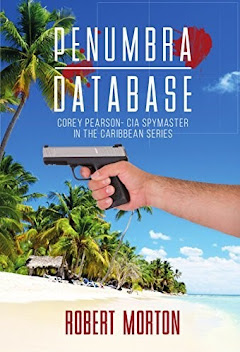 |
| Lost in Lost in the crowd, unaware he's already being watched — danger in paradise comes without warning |
There’s a certain mystique about
Colombia—colorful streets in Cartagena, the lush green Andes, Medellín’s
reinvention story. But for Americans eyeing the country as a travel
destination, there’s something they need to understand that doesn’t show up in
glossy Instagram posts or influencer travel blogs: Colombia can be deadly.
No sugarcoating it. Americans have been
kidnapped, drugged, robbed, and murdered here—and that’s just in the last few
years. If you’re thinking of venturing off the beaten path, you need to know
who’s waiting in the shadows.
Let’s rewind to 2003. A small plane
crashes in Colombia’s southern jungle. Three Americans survive the crash- and
then vanish. Taken hostage by FARC rebels, they spend over five years in
captivity. That wasn’t fiction. That was real. That was Colombia.
Fast forward to 2025, and the headlines
haven’t changed much. More than 80 people killed in Colombia’s northeast.
Dozens wounded. Civilians—ordinary people—forced to flee from their homes into
the mountains, clutching their kids and pets as they run. The National
Liberation Army (ELN) and ex-FARC rebels are in a bloody turf war over coca
fields and smuggling routes along the Venezuelan border. Peace talks? They’ve
failed five times. And if you think
that’s just Colombia’s problem, think again.
This is the backdrop of Silent Heroes, a
short-story spy thriller that feels more like a CNN special report than
fiction. In it, six Americans—doctors and aid workers—are kidnapped by FARC in
the jungle. Enter CIA operative Corey Pearson and his sleeper cell team,
deep-cover agents who live and breathe Colombia’s terrain. They blend in,
gather intel, and strike with surgical precision. Think it’s just storytelling?
Ask anyone who’s ever worked in Langley or Bogotá—the CIA has had its hand in
Colombia for decades.
The U.S. and Colombia have a long,
complicated relationship. Behind the official diplomacy and trade agreements,
there’s the real story: covert operations to hunt cartel leaders, support local
counterterrorism, and rescue American nationals when things go sideways. And
they do go sideways. More often than you’d believe.
Tourists don’t see this part. They’re
thinking coffee tours and salsa nights. But the U.S. State Department sees
something else—something darker. As of now, they advise Americans to reconsider
travel to Colombia altogether. Not just the remote jungles, but cities too.
Medellín, for all its urban charm, has seen tourists drugged and dumped. Bogota
isn’t exactly Disneyland after dark. And entire regions like Arauca, Norte de
Santander, and the Venezuela border? Off-limits. Crime, terrorism, and the risk
of being kidnapped or detained—those are the actual words used in the advisory.
Let’s talk street smarts. In Colombia, you
don’t wear flashy jewelry. You don’t flash cash. You don’t hail random
taxis—use an app or risk getting “paseado millonario,” a common scam where
drivers work with criminals to drain your bank account. These aren’t cautionary
tales. They’re survival tactics.
But what makes Colombia even more
unpredictable is the power vacuum in certain regions. When groups like the ELN
step in where the government steps out, the rules change. Community leaders are
being gunned down. Peace delegates are kidnapped mid-talks. And the average
American tourist, blissfully unaware, becomes an easy target.
There’s a scene in Silent Heroes where the
CIA team, posing as locals in Bogotá, watches hostage videos broadcast by the
captors. You feel the urgency, the rage, the helplessness. One of the agents,
Kimble, breaks protocol to show footage to an ambassador—because these hostages
aren’t just pawns. They’re people with families who didn’t sign up to die in
the jungle.
That's the emotional core of what
Americans need to understand. Colombia is beautiful. But beauty doesn’t cancel
out danger. You can have breathtaking views and a brutal ambush within the same
zip code.
The jungle doesn't care that you're a
tourist. It doesn't care that you're there for the adventure or the culture or
the Instagram photos. To guerrilla fighters and cartel thugs, you’re leverage.
A bargaining chip. Or worse, an afterthought.
The story of Silent Heroes mirrors
real-life cases where the U.S. has had to scramble elite teams into foreign
lands to clean up messy situations. It’s not a fantasy. It’s an echo of what
really happens when diplomacy fails and bullets start flying. Corey Pearson
might be fiction, but his mission isn’t far off from the actual ones we’ll
never hear about on the evening news.
So if you’re an American thinking about
visiting Colombia, don’t just pack sunscreen and a travel guide—pack awareness.
Be smart, stay alert, and understand the risks. The beaches and nightlife might
be beautiful, but they exist alongside regions where violence and lawlessness
still rule.
Because
in Colombia, the danger isn’t always where you’re going. It’s who might be
watching when you get there.
Robert Morton is a member of the Association of Former Intelligence Officers (AFIO) and writes about the U.S. Intelligence Community (IC). The Corey Pearson- CIA Spymaster series blends his knowledge of real-life intelligence operations with gripping fictional storytelling. His work offers readers an insider’s glimpse into the world of espionage, inspired by the complexities and high-stakes realities of the intelligence community.






No comments:
Post a Comment